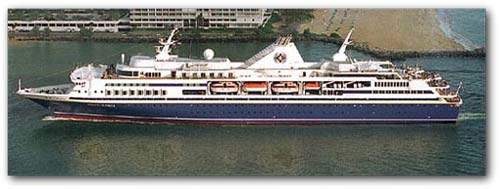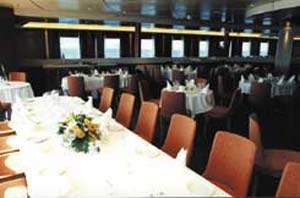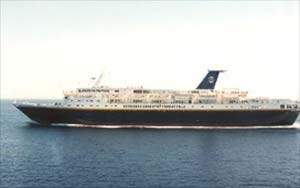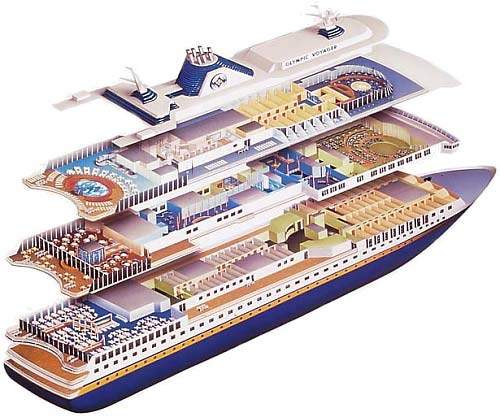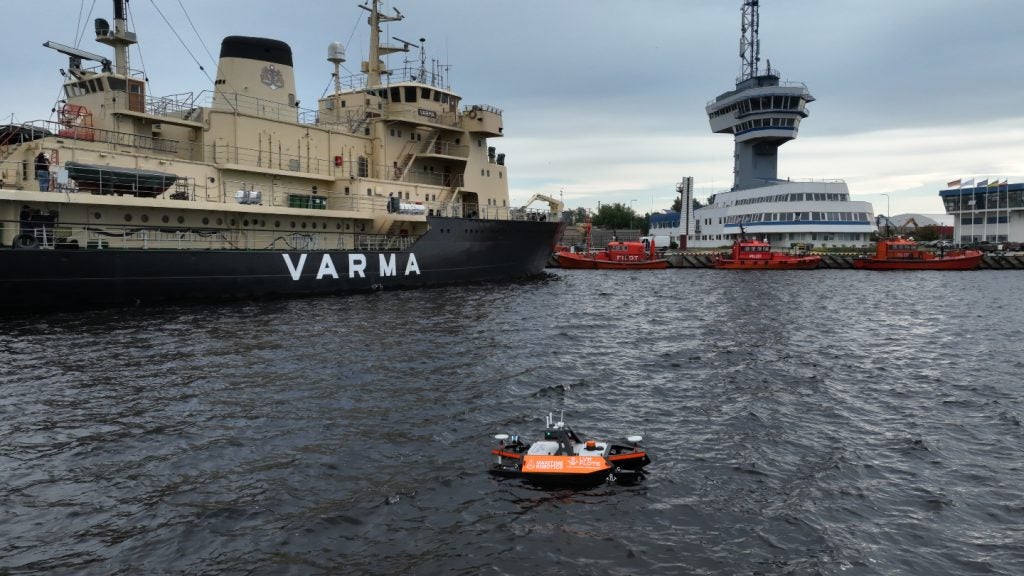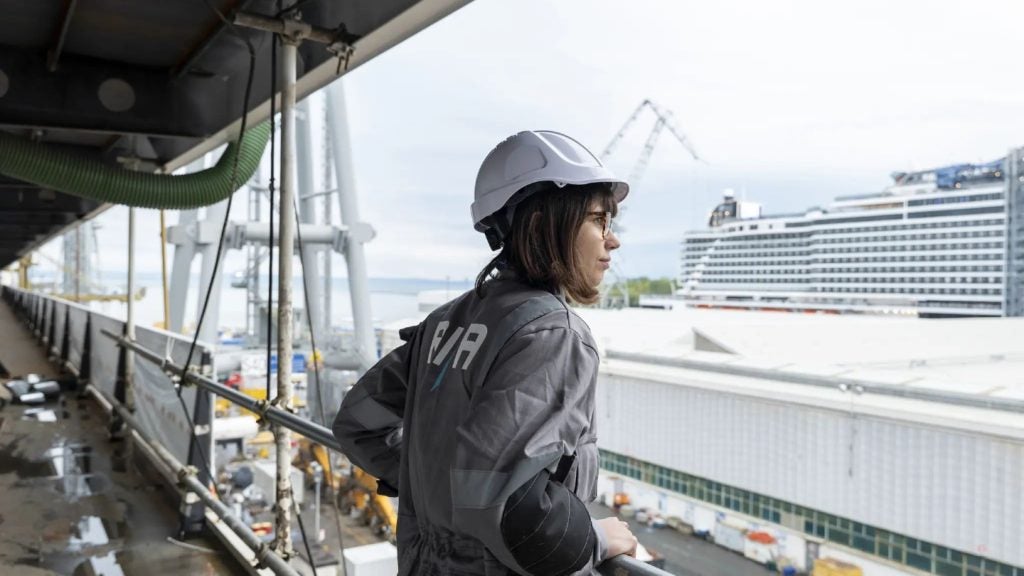Olympic Voyager, delivered by builders Blohm & Voss to Royal Olympic Cruises in time for her maiden voyage in June 2000, was the fastest cruiseship afloat at the time of construction.
An average speed of 27 knots enables the vessel to operate a seven-day three-continents itinerary. She is deployed in the Mediterranean, and at 24,391gt she offers, according to Royal Olympic, an intimate cruise experience. The size of the vessel enables her to call at the small, traditional ports used by the company in the Mediterranean.
Olympic Voyager flies the Greek flag and has Germanischer Lloyd classification.
DESIGN
According to Blohm & Voss the vessel is able to reach high speeds with minimum propulsion power due to the new design of its hull – the fast monohull. The shape of the hull is characterised by a slender forebody, extended lines above the waterline and a semi-tunnelled aftbody. The main displacement of the hull has been arranged deeply submerged; submarine-like. Two large CP propellers on short bossings have been positioned near the centre line of the hull with nearly touching disc areas. The propellers were designed and built by Kamewa. The wave-making resistance of the fast monohull is significantly lower, compared with conventional hull forms of fast ships, as it allows for an undisturbed flow of water to the propellers.
FACILITIES
The interior of the Olympic Voyager was designed on a Greek theme by AMK of Athens. The vessel has 292 double-occupancy staterooms, 72 triple-occupancy and four quadruple-occupancy staterooms of the same size. There are also four staterooms for wheelchair occupancy. Roughly two-thirds of staterooms have an ocean view. In addition, there are three types of suite; 20 junior suites, 16 bay window suites and 12 sky suites, which come with a private balcony and the services of a butler.
The main dining room has a 470 seat capacity, while breakfast and lunch is also available in the garden lounge. Pasta and pizza are available in the pool area from 2pm to 2am.
The heating, ventilation and air-conditioning systems for the ship were supplied by Rudolf Otto Meyer (ROM) and the electrical outfitting was provided by ABB.
PROPULSION
High propulsive efficiency is achieved by the positioning of the propellers in a conventional single-screw arrangement in the wake of the hull. This positioning improves the manoeuvrability of the vessel.
The propellers are driven by four 9L46C Wärtsilä NSD engines, each with an MCR of 9,450kW. The four auxiliary engines are each 2,000kW Wärtsilä 8L26As. The main engines and four auxiliary engines are situated in two separate engine rooms, sharing a common gear room. The vessel can operate with any combination of main engines and, with two main engines running, she can reach speeds of 22 knots. Noise and vibration control on the vessel are said to be excellent. The noise performance for the vessel was engineered by Kaefer, which also designed and installed the ship’s insulation.

